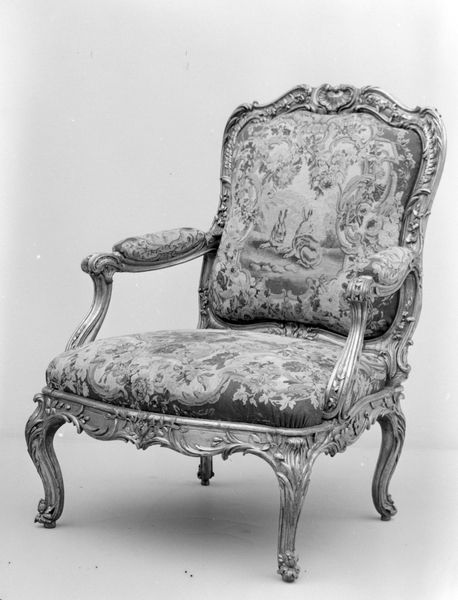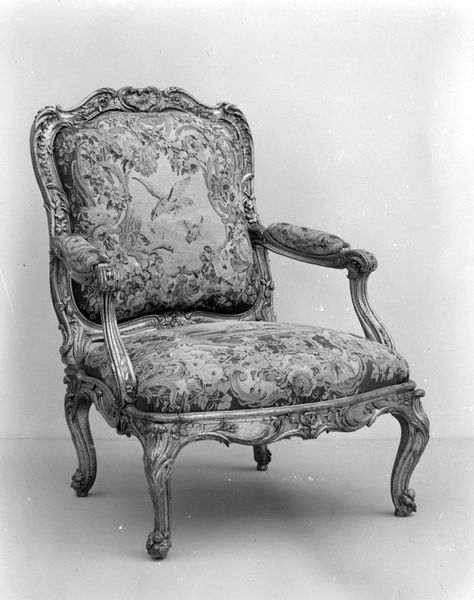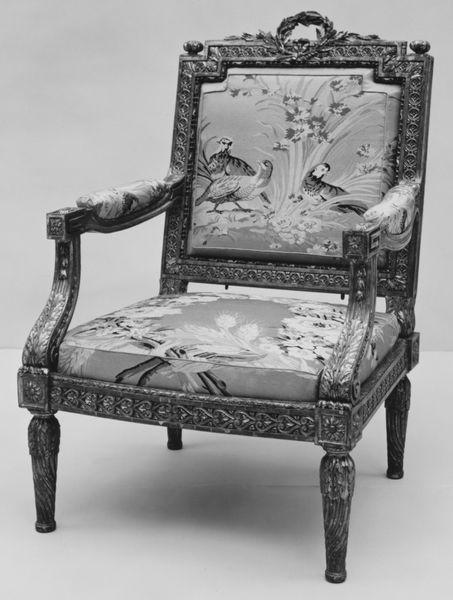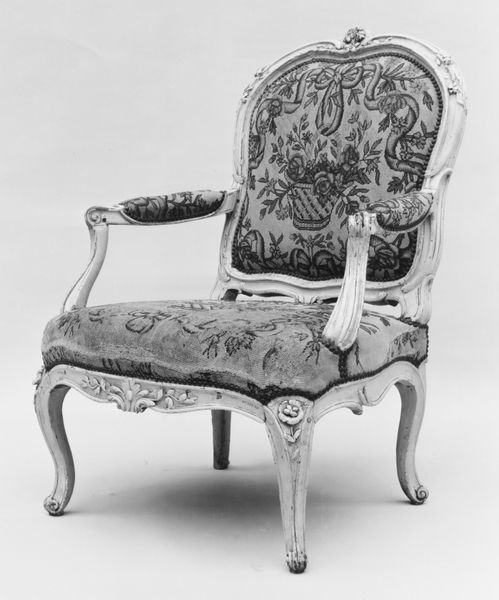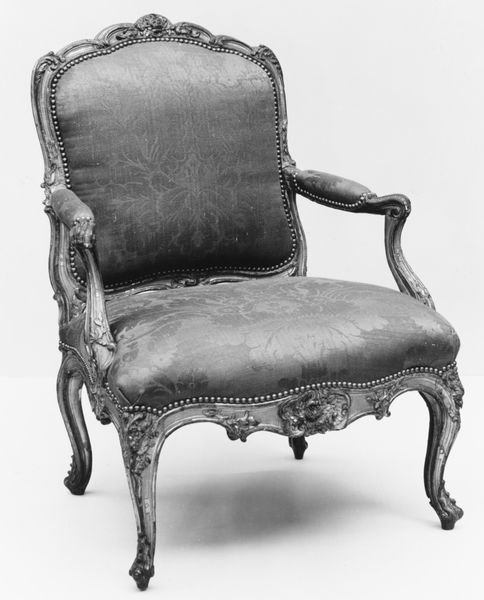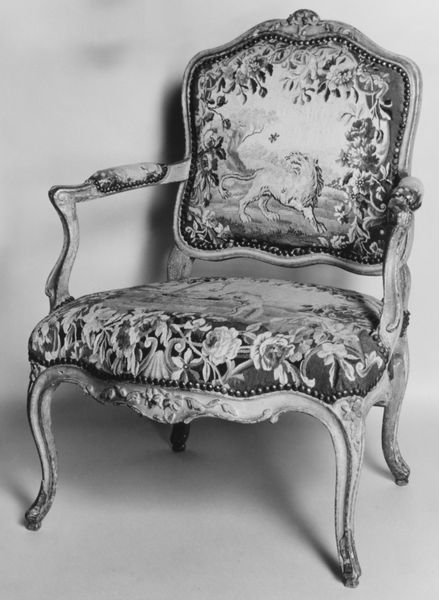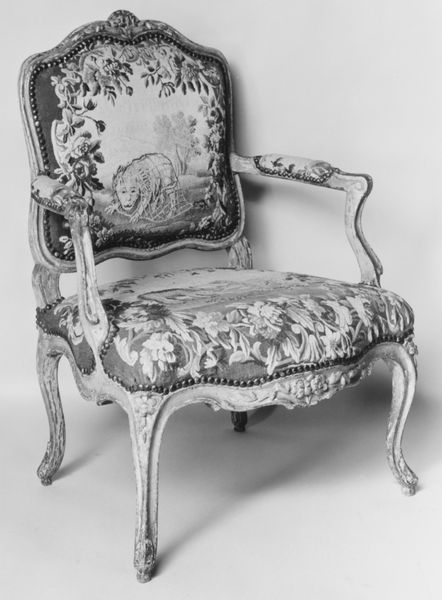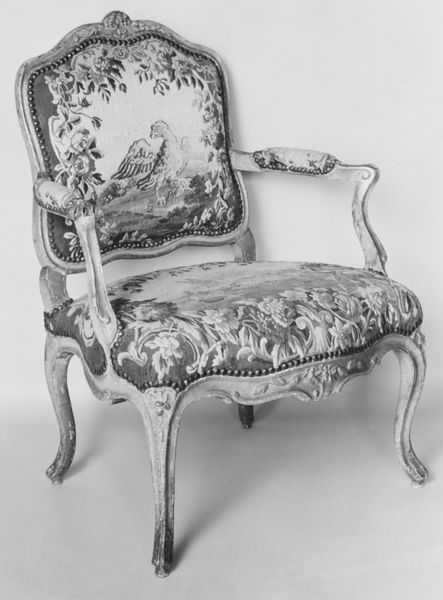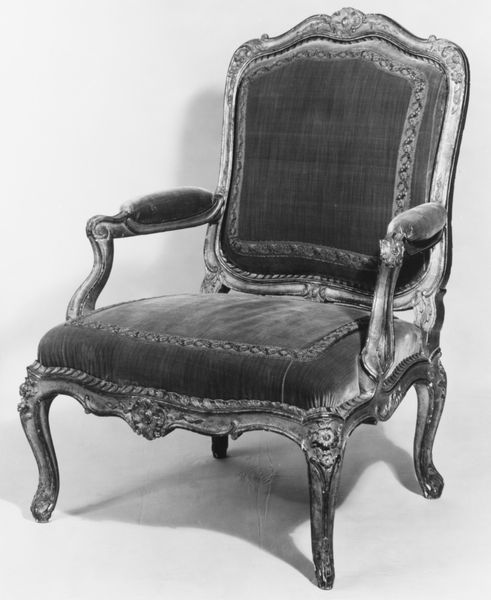
carving, textile, sculpture, wood
#
carving
#
sculpture
#
furniture
#
textile
#
sculpture
#
wood
#
decorative-art
#
rococo
Dimensions: 40 5/8 x 29 3/4 x 25 1/2 in. (103.2 x 75.6 x 64.8 cm)
Copyright: Public Domain
Curator: Before us is an armchair crafted between 1749 and 1761 by Nicolas-Quinibert Foliot, currently held at the Metropolitan Museum of Art. Its intricate carvings and decorative textile mark it as a beautiful example of Rococo decorative art. Editor: It practically dances before my eyes. The dynamism of the Rococo style really shines through here, doesn't it? Look at the curvilinear forms and asymmetrical balance. The eye just never rests. Curator: Absolutely. The Rococo aesthetic embraced asymmetry as a way to capture a sense of motion and playfulness, a reflection of the aristocratic lifestyle of the era. Think of the psychological effect—this would create an environment of ease and distraction. Editor: And consider how the structure serves the surface! The eye follows the lines and light over its carved wood frame; notice also how its tactile fabric invites closer inspection. It almost seems that the form grows organically with its ornate detailing. Curator: It’s important to remember that these pieces weren't merely furniture; they were potent status symbols, signaling refined taste and affluence. The visual language of flora and fauna integrated into the design echoes nature as a reflection of cultivated landscapes of leisure, like those viewed while reclining within the chair. Editor: Tell me more about the narrative imbued within its patterned upholstery. It certainly complements its sculpted wooden frame. I detect floral designs but also what appear to be human or animal figures— Curator: Yes, textiles during this era frequently told stories drawn from mythology or pastoral scenes. The tapestries functioned as carriers of cultural values. One can imagine narratives about love, pleasure, and aristocratic leisure circulating within this object. Editor: So, this chair served as a physical embodiment of its patron's values and a repository for societal narratives. Form and symbolism coexisting beautifully! Curator: Precisely. Foliot's creation gives us a tactile glimpse into the cultural values and material sensibilities of 18th-century high society. It is a moment captured in carved wood and woven thread. Editor: Yes, thinking about that time has deepened my initial aesthetic impressions. I noticed the shape; you connected me with its stories! Thank you.
Comments
No comments
Be the first to comment and join the conversation on the ultimate creative platform.
